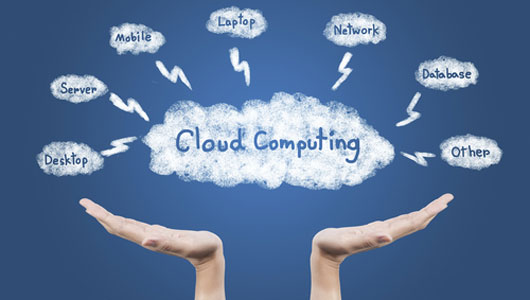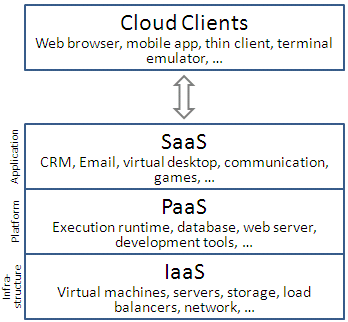Cloud computing has made it possible for businesses of all sizes to avail computing services on the web, thereby eliminating the need of buying own servers, software licenses, hardware etc. There is no need to hire staff to maintain and repair on-premises servers. Moreover, cloud computing scalability acts as a savior to your business when it witnesses sudden growth and high traffic, meaning it automatically allocates as many servers as needed to meet the requirement. You pay as per actual numbers of servers being put in use. When the numbers of users go down, cloud computing again automatically reduces the numbers of servers, not compelling you to pay for unnecessary usage of servers.
Benefits of Cloud Computing
- High productivity with fewer people
- Reduces significant costs
- Scalability
- Any time accessibility
- No licenses required for new software
- No maintenance and upgrade required at your end
- Pay as per use
- Flexibility to migrate from one cloud provider to another

Source: www.ricohidc.com
Three Main Service Models of Cloud Computing
There are three main service models of cloud computing, generally known as cloud hosting providers. Those companies who offer some basic components of cloud computing like IaaS, PaaS, SaaS are typically termed as cloud providers which are also referred to as cloud service provider which are mentioned below:
- IaaS (Infrastructure as a Services)
- PaaS(Platform as a Service)
- SaaS(Software as a Service)
As the name suggests provides infrastructure to businesses to get easy access to virtualized computer resources over the internet. An IaaS user gets access to third-party hardware, software, servers, storage and other infrastructure components.
User develops, runs and manages web applications on the cloud. The cloud provider allows the customer to use tools for developing a software by simply using a web browser. The user is free to choose any features that best fit his requirements and pay accordingly. Some best examples of such features are:
server software, operating system, database management system, storage, networks access etc.
Also called on-demand software, provides a user subscription for license of a centrally-hosted software on the cloud. SaaS enables delivery of applications over the internet, which avoids the need of buying, installing and maintaining own software, thus brings down costs of running a business by a big extent. Also, there is no hassle of managing complex software and hardware.

Source: kk.wikipedia.org
Below is the list of Top Cloud Computing Platforms for IaaS, PaaS and SaaS
|
IaaS
|
PaaS
|
SaaS
|
|
Amazon Web Services
|
Amazon Web Services
|
Amazon Web Services
|
|
Microsoft Azure Cloud
|
LongJump
|
Oracle Taleo
|
|
CenturyLink Cloud
|
Windows Azure
|
Net Suite
|
|
Google
|
Google
|
Google
|
|
IBM
|
IBM
|
IBM
|
|
Rackspace
|
OPENSHIFT
|
Rackspace
|
|
Verizon Cloud
|
Cloud Foundry
|
Microsoft
|
|
Virtustream Cloud
|
Salesforce
|
Salesforce
|
|
CSC Cloud
|
CloudBees
|
GoGrid
|
|
VMware
|
Engine Yard
|
Incontact
|
Let’s Now Discuss Cloud Enablers
Development of a highly scalable, reliable and robust cloud computing service involves a lot of complexity, skill and hardwork. Cloud enablers play a significant role in devising cloud strategies, service selection and development of cloud applications and infrastructure. In even simpler words, a cloud enabler is an important cog in the wheel of building, deploying, integrating and delivering cloud computing solutions.
Never mistake a cloud enabler for a cloud service provider. A cloud enabler develops a cloud computing service that a cloud service provider later delivers to end users. Cloud enablers are primarily IT firms and make use of technology advancements to develop cloud computing components, including hardware, software, storage, networking and many more.
I hope this blog sheds sign light on Cloud Computing, its top platforms and Cloud Computing enablers.
0 Comment(s)